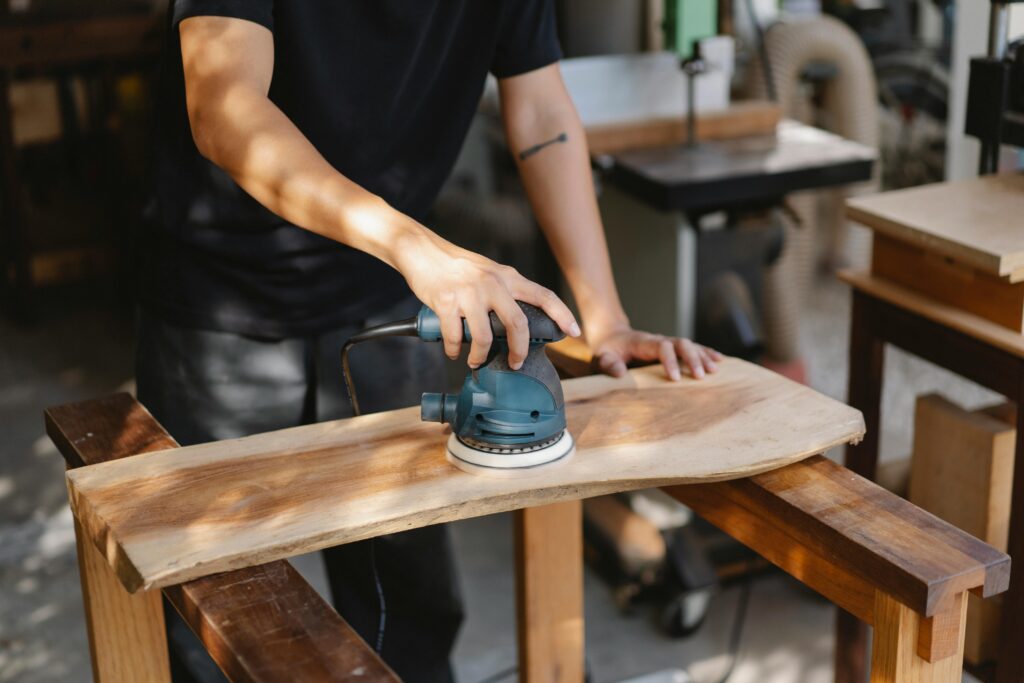Introduction
So, you’ve decided to add a touch of rustic charm to your furniture or crafts – enter the wood grain tool! This nifty little gadget is your ticket to creating realistic wood grain patterns on a variety of surfaces, from walls to cabinets, and more.
What is a Wood Grain Tool?
A wood grain tool is a simple tool that makes things look like wood. It has a bumpy roller or comb attached to it. When you use it, it makes cool patterns that look like real wood.
Benefits of Using a Wood Grain Tool
Using a wood grain tool is like magic for people who love doing projects themselves or who work as professionals. It’s super cool because it lets you make regular surfaces look like wood, without a lot of hassle. And guess what? It’s way faster and cheaper than doing it the old-fashioned way with wood stain.
Choosing the Right Wood Grain Tool
.With various options on the market, finding the perfect tool can make a world of difference in achieving the desired result.
Types of Wood Grain Tools
Wood grain tools are things you use to make wood patterns. They come in different kinds like bumpy rollers, combs, and brushes. You pick which one to use based on what you’re making and what you like.
Factors to Consider When Choosing
When selecting a wood grain tool, consider factors such. as the type of surface you’re working on, the desired wood grain pattern, and your level of experience. Opt for a tool that feels comfortable to use and suits the scope of your project for best results.
Preparing Your Surface
Proper surface preparation is key to achieving a flawless wood grain finish. Taking the time to clean, sand, and prime your surface will ensure that the wood grain tool works its magic.
Priming the Surface
Priming the surface before using the wood grain tool is crucial, especially if you’re working on a porous or uneven surface. Primer helps seal the surface, enhances adhesion, and ensures the wood grain tool produces crisp, defined patterns.
Applying the Wood Grain Tool
It’s showtime – time to put that wood grain tool to work and witness the transformation of your project. With the right techniques and a bit of practice, you’ll be amazed at the realistic wood grain effects you can achieve.
Techniques for Using the Tool
Experiment with different techniques. when using the wood grain tool, such as varying pressure, direction, and speed. This will help you create diverse wood grain patterns, from fine lines to bold knots, adding depth and character to your surface.
Step-by-Step Application Process
Follow a systematic approach when. applying the wood grain tool, working in small sections, and maintaining a consistent motion. Roll, drag, or brush the tool across the surface in a controlled manner to ensure even coverage and a natural wood grain effect.
Creating Different Wood Grain Effects
Classic Wood Grain Effect
To achieve a classic wood grain effect, start by applying a base coat of paint in your desired wood color. Then, drag the wood grain tool through the wet paint to create straight lines resembling wood grain.

Weathered Wood Grain Effect
For a weathered wood grain effect, use a dry brush technique with a wood grain tool. Then, drag the tool over the surface to create a distressed look.
Finishing Touches and Maintenance
Sealing and Protecting the Finish
Once you are satisfied with the wood grain effect, apply a clear coat or varnish to seal and protect the finish. This will ensure the durability and longevity of your project. Choose a finish that complements the look you want to achieve, whether it’s a glossy or matte appearance.
Maintenance Tips for Wood Grain Tools
To keep your wood grain tool in top shape, clean it after each use with warm, soapy water. Make sure to remove any dried paint or debris that could affect future projects. Store your tool in a safe place to prevent damage and ensure it’s ready for your next wood grain project.
Troubleshooting Common Issues
Dealing with Smudges and Blotches
If you encounter smudges or blotches in your wood grain effect, it may be due to excess paint or uneven pressure while using the tool. To fix this issue, sand the affected areas and the wood grain effect with more control and consistency.
Correcting Uneven Grain Patterns
Uneven grain patterns can be fixed by adjusting the pressure and speed at which you use the wood grain tool. Try practicing on a test surface before applying the technique to your project. Additionally, blending techniques can help smooth out any uneven areas for a more polished look.
Advanced Tips and Techniques
Layering Wood Grain Effects
For a more intricate wood grain look, consider layering different wood grain effects on top of each other. Start with a base coat and apply multiple wood grain effects with varying colors and directions.
Customizing Wood Grain Tools for Unique Finishes
Get creative and customize your wood grain tools to achieve unique finishes. Experiment with different tool shapes, sizes, and textures to create one-of-a-kind wood grain effects. You can also combine multiple tools to achieve complex patterns and textures that stand out in your projects.
conclusion
With this tool, you can make your wood look like it has real grain patterns. follow these simple tips and techniques, and. you’ll be able to create professional-looking effects that will amaze everyone. Whether you want your wood to look natural or you’re aiming for something special, practice, patience, and creativity are all you need.
